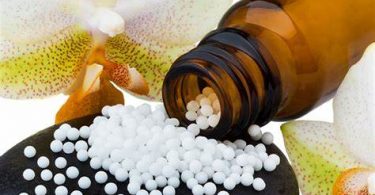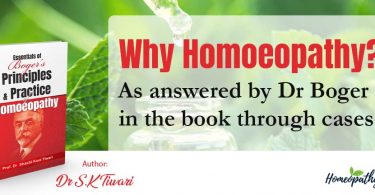Nosodes are Homoeopathic medicines prepared from pathogens, products of pathogens or pathologically altered tissue according to Standardised Homoeopathic Pharamacopoeia.
Coronavirus disease (COVID-19) is an infectious disease caused by a newly discovered coronavirus
Most people infected with the COVID-19 virus will experience mild to moderate respiratory illness and recover without requiring special treatment. Older people, and those with underlying medical problems like cardiovascular disease, diabetes, chronic respiratory disease, and cancer are more likely to develop serious illness.People with COVID-19 generally develop signs and symptoms, including mild respiratory symptoms and fever, on an average of 5-6 days after infection (mean incubation period 5-6 days, range 1-14 days). Most people infected with COVID-19 have mild disease and recover. Approximately 80% of laboratory confirmed patients have had mild to moderate disease,which includes non-pneumonia and pneumonia cases, 13.8% have severe disease (dyspnea, respiratory frequency 30/minute, blood oxygen saturation 93%, PaO2/FiO2 ratio 50% of the lung field within 24-48 hours) and 6.1% are critical (respiratory failure, septic shock, and/or multiple organ dysfunction/failure). 1
Why Nosodes should be preferred as Genus Epidemicus ?
They act as specific Homoeoprphylaxis ..Since they are made from same pathogenetic material as the disease…so they seem to offer more possibility of mimicking the disease condition and thus more similarity thus justifying treatment through Homoeopathic law of cure.
Nosodes are also very useful in protecting individuals from the identical infectious disease. For example, Pertussin is reputed to prevent whooping cough; Diphtherinum is reputed to prevent for diphtheria; Morbilinum is reputed to prevent measles; Rubellinum (Rubella nosode) is reputed to prevent rubella; Parotidinum is reputed to prevent mumps; Varicellinum (chickenpox nosode) is reputed to prevent chickenpox; Tetanus Toxin is reputed to prevent tetanus and Meningococcinum is reputed to prevent meningitis. Influenzinum is reputed to prevent flu; Haemophilus is reputed to prevent Haemophilus influenza type B; and Pneumococcinum is reputed to prevent pneumonia.2
Homoeoprophylaxis through nosodes and Incidences where Homoeoprophylaxis was done through nosodes
Nosode of the threatening miasm is given as a preventive of the same disease. In this way, the infectious miasms carry their own cure. For example, the nosode, Pertussin, is reputed to prevent whooping cough. Unlike the remedy epidemicus, the exact nature of the miasms behind the epidemic must be known and a proper stock available. Homeopathic nosodes have a wider band of action than orthodox immunization. For example, nosodes from previous flu epidemics are often effective against new epidemics. If this is not the case, new nosodes can be made from patients suffering from a new infectious disorder. Dr. P Chavanon (Paris 1932) administered Diphtherinum 4M and 8M and after one to two months the antitoxins were measured in the blood. He noted that 45 children changed from Schick test +ve (no antibodies against diphtheria) to shick test ve (antibodies present) (Chavanon, P. La Dipterie, 4th edition. St. Denis, Niort: Imprimerie 1932.). Patterson and Boyd repeated this text in 1941, and 20 out of 33 children were observed to produce antibodies to diphtheria by Schick test (Patterson, J and Boyd WE. “Potency Action: A Preliminary Study of the Alteration of the Schick Test by a Homeopathic Potency.” British Homeopathic Journal 1941; 31: 301-309). Dr. Roux repeated the experiment in 1946. This nosode provided laboratory confirmation of lasting immunity. The blood antitoxins seemed to last up to 5 years with one dose. (Eizayaga, F. “Tratamiento Homeopatico de las Enfermedades Agudas y Su Prevension.” Homeopatia 1985; 51(342): 352-362.). Allen used Diphtherinum for 25 years as a prophylactic and no one he treated in such a manner contracted the disease. He challenged the profession to test this assertion and publish their failures.2
In August 1974 in Guarantingueta, Brazil there was a severe epidemic of meningitis. 18,640 children were given Meningococcinum 10CH while 6,340 children did not receive the nosode. Out of the 18,640 children 4 cases of meningitis developed. Out of the 6,340 children 34 cases were noted. Such a large-scale public health campaign cannot be carried out with individualized treatment. This study implies that the success rate of Meningococcinum was 95%. (Castro, D and Nogueira GG. “Use Of The Nosode Meningococcinum As A Preventive Against Meningitis.” JAIH 1975; 68: 211-219.)2
. Dr. W.L. Bonnel, M.D. presented a paper to the International Hahnemannian Association on June 1940 on homoeoprophylaxis. He stated:
“Not one case receiving homeopathic care died, while the ‘old school’ doctors lost 20 percent of their (smallpox) cases… I gave about 300 internal vaccinations (homeopathic remedies), five to adults acting as practical nurses; to the man who installed the telephone and lights in the pest house; to mothers who slept with their children while they had smallpox in its severest form. All of these people, exposed daily, were immune.” NOSODES THAT CAN ACT AS RELIABLE PROPHYLACTICS AS WELL AS CURATIVES 2
SUGGESTED NOSODES IN PREVENTION AND MANAGEMENT OF COVID-19
TUBERCULINUM
A glycerine extract of a pure cultivation of tubercle bacilli (human).
As per Lectures on Homoeopathic Materia Medica by Dr Kent (page 1000) the Tuberculin nosode can prevent TB infection in those having predisposition to miasma. “If Tuberculinum bovinum be given in 10m, 50m, and CM potencies, two doses of each at long intervals, all children and young people who have inherited tuberculosis may be immuned from their inheritance and their resiliency will be restored
Burnett treated 54 cases of different types of TB Tuberculinum(Tub)/Bacillinum(Bac) 3
As stated in an article published in economic times ,countries without universal policies of BCG vaccination, such as Italy, the Netherlands, and the United States, have been more severely affected compared to countries with universal and long-standing BCG policies,” noted the researchers led by Gonzalo Otazu, assistant professor of biomedical sciences at NYIT.
The study noted that Australian researchers have recently announced plans to fast track large-scale testing to see if the BCG vaccination can protect health workers from the coronavirus.
The team compared various nations’ BCG vaccination policies with their COVID-19 morbidity and mortality and found a “significant positive correlation” between the year when universal BCG vaccination policies were adopted and the country’s mortality rate.
Iran, for instance, which has a current universal BCG vaccination policy that only started in 1984, has an elevated mortality rate with 19.7 deaths per million inhabitants, they said.
In contrast, Japan, which started its universal BCG policy in 1947, has approximately 100 times fewer deaths per million people, with 0.28 deaths, according to the study.
Brazil, which started universal vaccination in 1920 has an even lower mortality rate of 0.0573 deaths per million inhabitants, the scientists noted.
The researchers noted that among the 180 countries with BCG data available today, 157 countries currently recommend universal BCG vaccination.
The remaining 23 countries have either stopped BCG vaccination due to a reduction in TB incidence or have traditionally favoured selective vaccination of “at-risk” groups, they said.4
Thus we can see that Tuberculinium is reputed since a long timeas homoeoprophylactic in place of BCG. So Tuberculinum in high potency can act as an effective and dependable prophylactic in corona Virus .
PNEUMOCOCCINUM-
Pneumococcinum is reputed to prevent pneumonia. 5
In end stages OF CORONA VIRUS when we encounter symptoms like high fever ,pneumonia,pleurisy , -Pneumococcinum can be considered due to it being most similar to exisiting disease condition. Historically Pneumococcinum along with Influenzinum has been seen in eliciting drastic immunological responses in disease conditions following flu since it creates picture of pneumonia..
INFLUENZINUM and Oscillococcinum
Influenzinum is reputed to prevent flu and flu line symptoms 5
Oscilllococcinum –prepared from liver of wild duck has been observed to reduce course of illness due to influenza this it can be included as one of the probable medicnes in treatment of corona virus in earlier stages6
A study conducted by Colombo GL1, Di Matteo S2 et al suggests that the treatment with Oscillococcinum could be helpful in preventing RTIs and improving the health status of patients who suffer from respiratory diseases7
Comparison of Allopathic vaccines and Nosodes
Allopathic vaccines are isopathic in nature, cude in nature unlike nosodes which are dynamic in nature with deeper penetrative abilities ..Nosodes when administered mimic the sickness and by natures law of cure prevent and treat illness.Nosodes being the same as original disease are more similar to the disease condition and are deeper in action since they are potentised
Thus realising effectiveness of nosodes in prevention and treatment of epidemics Nosodes are suggested as one of the probable approaches for COVID 19
Author:
Dr KAJAL JAIN
MD MATERIA MEDICA (2017-2020)
BAKSON HOMOEOPATHIC MEDICAL COLLEGE AND HOSPITAL
REFERENCES
1 . https://www.covidhomeo.com/2020/04/coronavirus-covid-19-analysis-of.html?m=1
2 . http://www.simillimum.com/education/little-library/case-management/pedh/article.php
3. Burnett J. Crompton, The New Cure for Consumption, New Delhi: Pratap Medical Publishers.pp1-7
4. https://m.economictimes.com/news/science/us-scientists-link-bcg-vaccination-with-fewer-covid-19-cases-indian-scientists-hopeful-but-cautious/articleshow/74931591.cms
5. http://www.simillimum.com/education/little-library/case-management/pedh/article.php
6. Vickers AJ, Smith C. Homoeopathic Oscillococcinum for preventing and treating influenza and influenza-like syndromes. Cochrane Database Syst Rev 2000;(2):CD001957
7 Colombo GL1, Di Matteo S2, Martinotti C2, Oselin M2, Bruno GM2, Beghi GM3 The preventive effect on respiratory tract infections of Oscillococcinum®. A cost-effectiveness analysis. 23 Jan 2018





